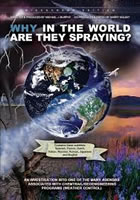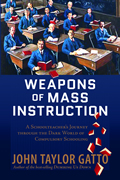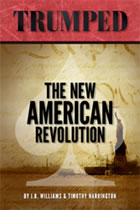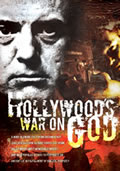By
Servando Gonzalez, Author of...
Psychological
Warfare and the New World Order and I
Dare Call It Treason, and the DVDs Treason
in America and Partners
in Treason.
December 6, 2016
NewsWithViews.com
At end of Fidel Castro’s long life one has to pass a balance and ask what were his biggest successes and what were his biggest failures. I think that the Cuban tyrant had several major accomplishments in his life, and just a single, big failure.
One of his main accomplishments was to fool both friends and enemies into thinking that he was a Communist. Evidence, however, shows that Castro’s ideology — or lack of it[1] — was much more closer to fascism than to communism.
Castro was the son of a rich landlord who sent him to be educated by the Jesuits at the Belén High School in Havana. At the school he fell under the influence of some reactionary priests, and became an avid reader of works by Mussolini, Hitler and Spanish Fascist Primo de Rivera.
Despite his claims on the contrary, Castro was never a Marxist or a Communist, nor a member of the pro-Soviet Cuban Communist Party. By his own admission, he was totally ignorant of Marxist doctrine. Paradoxically, the ones who over and over have claimed that he was a Communist have been Castro himself and his enemies in Miami.
Evidence of Castro’s fascist leanings is shown in his last words in his own defense at the trial for his failed assault of the Moncada Garrison in 1953, “Condemn me, never mind, History will absolve me.” They were very similar to Hitler’s final words in his own defense at the trial for the frustrated 1923 beer-hall putsch “Condemn me, never mind. The Goddess of History will absolve me.” Castro’s words didn’t pass unnoticed to the Cuban Communists,[2] who many times called him a “putchist” — communist lingo for Fascist.
Another of Castro’s accomplishments was his excellent work as a secret agent first for the CIA and later for the CIA’s masters, the CFR globalist conspirators.
In early 1948, when he was a law student at the University of Havana, Castro became a secret tool of the American invisible government when he was recruited by the Central Intelligence Agency, recently created by the Council on Foreign Relations’ conspirators, and sent to Bogotá, Colombia as an agent provocateur to participate in the assassination of leader Jorge Eliécer Gaitán and instigate the Bogotazo riots. Castro’s job was to plant false clues implicating the Colombian communists and the Soviet Union for the riots. The CFR conspirators blamed the Communists for Bogotazo, and used the fear of communism and the Soviet Union to justify the beginning of a long psychological warfare operation against the American people called the Cold War.[3]
Some years later, in 1956, Soviet premier Nikita Khrushchev had launched his new policy of Peaceful Coexistence. According to Khrushchev, the competition between the Soviet Union and the U.S. should continue, but in the commercial, cultural and technological field, not as a military confrontation. The CFR conspirators saw this as a threat to dismantle the enemy they had artificially created. So, they called their good agent Castro to help them solve their problem.
As soon as the CFR conspirators allowed Castro to take power in Cuba in 1959, he managed to infiltrate the Soviets. Nevertheless, to their utter surprise, as soon as they accepted him as part of the Communist Bloc, he began attacking Khrushchev’s doctrine of Peaceful Coexistence. To this end, he created and bankrolled anti-U.S. guerrilla movements in Latin America and terrorist groups all around the world and destroyed the pro-Soviet Communist parties in Latin America.
Acting on behalf of his CFR masters, he heated up the Cold War. Nevertheless, despite the fact that Castro was an agent of the most reactionary right, the world leftists saw him as a man of the Left. They failed to see that he was actually a secret agent of the most reactionary people in this planet: oil magnates, international bankers and CEOs of transnational corporations. Nevertheless, he was extremely successful in fooling the lefties and “progressives” of the world to think that he was a man of the Left who cared for the rights of the poor farmers and workers.
Castro’s second main accomplishment in his life was using Cuba as a successful testing ground for the New World Order.
The New World Order conspirators ensconced at the CFR believe that the world is overpopulated and that we the people consume too much of the world’s resources that, by natural law, belong to them. So, their two main goals are depopulation and deindustrialization. That is exactly what Castro accomplished in Cuba.
Contrary to common belief, before Castro took power in 1959, Cuba was not an underdeveloped country. The standard of living and mind-set of average Cubans was so close to their American neighbors that, since the early Fifties, many American marketing companies were using the Island as a proving ground to test their products before launching them in the U.S. Seemingly, the use of Cuba as a testing ground for American products, services and ideas, did not end when Castro took power in 1959. Actually, Castro’s Cuba became a large-scale experiment in social engineering, a test run of the New World Order before its worldwide implementation by the globalist conspirators.
And Castro was highly successful. Less that ten years after he took power, Cuba became one of poorest countries in Latin America. At the time of his death, in most economic and social indexes Cuba today ranks barely above Haiti.
Because of its intrinsic faults, communism was a social and economic failure. But what we are witnessing in Cuba today is not a failure as a result of unsound policies, much less the inefficient American “embargo,” but the success of the deliberate planned destruction of a country and its people, very similar to what the CFR conspirators and their minions have been doing in the U.S.
Castro’s third major accomplishments is having managed to keep having the support and admiration of the American “progressive” Left despite being the main killer of leftist leaders.
There is strong evidence indicating that Castro, acting on behalf of his CFR masters, played a key role in the assassinations of U.S. President John F. Kennedy[4] Chile’s President Salvador Allende[5] and Venezuela’s Hugo Chavez.[6] Also, he betrayed Che Guevara and allowed for Che’s capture and killing in Bolivia.[7]
Another of Castro’s greatest accomplishments is that, despite his hatred for homosexuals, American gays still love him.
Since Castro took power in Cuba, his regime was particularly repressive toward homosexuals, and imposed a maximum 20 years sentence for public expression of homosexuality. Even Castro-friendly CFR agent Herbert Matthews, who visited Cuba several times and moved freely among senior officers of the Castro government, once commented that “There seems to be an unusually strong emotional aversion to homosexuals in Cuba — which Castro shares.”[8]
In 1963 Castro approved Operation P, so called because of a big, black “P” (for prostitutas, pederastas, proxenetas—prostitutes, pederasts, pimps) painted on the uniform of the inmates. Operation P was a massive dragnet that began with a nation-wide census of effeminate homosexuals. Operation P was the first step leading to the creation of the UMAPs (Military Units to Help Production), a euphemism for concentration camps for effeminate homosexuals and other “deviates.” UMAP inmates were under a regime of hard labor and subject to constant verbal and physical abuse, including open attacks and homosexual harassment from their butch, macho jailers.[9]
Those are what I consider Castro’s main accomplishments. But, what about his failures?
I think that Castro’s major failure was his unsuccessful attempt when to destroy the U.S. and the world in 1962. Contrary to his wishes, Castro never became the greatest killer in the modern history of mankind. But it was not for his lack of trying. Neither Hitler nor Stalin ever came as close as Castro to setting off a worldwide nuclear holocaust that would have made the horrors of WWII look pale in comparison.
On October 3, 1962, a few days before the onset of the Cuban missile crisis, Castro sent one of his trusted men, trained terrorist Jorge Santiesteban, to New York on a key mission. As soon as Santiesteban arrived in New York, he contacted the rest of his team that, according to FBI estimates, ranged from twenty-five to fifty people. Their mission was to blow up a big portion of Manhattan, including the Statue of Liberty, Macy’s department store, several subway stations, the 42nd street bus terminal and Grand Central Station, as well as several refineries along the New Jersey shore, including the Humble Oil and Refining Company in Linden. To this effect they stored a huge cache of explosives at Garcia’s shop.[10]
But the saboteurs’ plan was too ambitious and included too many people, and soon the FBI got word of it and detained the main conspirators. Had their plan worked out the way it had been conceived, it would undoubtedly have ignited American public opinion and prompted retaliation against Cuba. Had it occurred during the tense days of the crisis it may have been taken for a Russian preemptive attack on the United States and may have triggered a spasm-like retaliatory strike on the Soviet Union, with unpredictable consequences.
Fortunately, the plan failed. But Fidel Castro is a very resourceful man. After his failed attempt to create a provocation that may have brought a nuclear confrontation between the superpowers, Castro pulled another ace from his sleeve.
On October 26, 1962, at the most critical moment of the Cuban Missile Crisis, Castro visited the Soviet embassy in Havana and stayed through the early hours of the next day writing a letter to Khrushchev. The most important part of the letter is Castro’s efforts to convince Khrushchev that an American invasion of Cuba was imminent, and his request that, in case of such invasion, the Soviet Union should launch a preemptive nuclear attack against the United States. This attack, if carried out, would have unleashed a devastating nuclear exchange that would have killed most of the people in the northern hemisphere.
Fortunately, the Soviet leader didn’t pay attention to Castro’s wishes and the world was saved from nuclear Armageddon. Obviously, Castro’s letter scared Khrushchev, because that same day he began sending conciliatory messages to Kennedy in a desperate effort to put an end to the crisis.
Nevertheless, Castro’s obsession with destroying the U.S. and the world did not end when he wrote this letter to Khrushchev. The next day, at the apex of the crisis, on October 27, 1962, an American U-2 spy plane was shot down on the eastern part of Cuba by a Soviet surface-to-air missile (SAM). Several explanations, some of them conflicting with each other, have been given to explain that bizarre event, but most people agree that the missile was fired in violation of orders from Khrushchev and the Soviet high command.
Following Castro’s orders, and disregarding Soviet advice, in the morning of Saturday, October 27, antiaircraft batteries manned by the Cuban army began firing at American low-flying reconnaissance planes, damaging at least one. As Castro himself told Tad Szulc, “I am absolutely certain that if the low-level flights had been resumed we would have shot down one, two, or three of these planes. . . With so many batteries firing, we would have shot down some planes. I don’t know whether this would have started nuclear war.”[11] Though Cuban crews were operating anti-aircraft guns, the powerful surface-to-air missiles (SAMs) were under the Soviet’s tight control, and the Cubans had no access to the bases and didn’t know how to operate them. Nevertheless, at about 10:00 a.m. of that same Saturday morning, an American U-2 was shot down by a SAM fired from a battery at Los Angeles, near Banes, Oriente province.
Some years later, in 1989, Aleksandr Alekseev, former Soviet ambassador to Cuba and a senior KGB officer who was “turned” by Castro, said that the U-2 was shot down by a “trigger-happy Soviet air defense commander.”[12]
There is, however, another version to the story. According to Seymour Hersh, there is strong evidence that, on October 26, 1962, a Cuban Army unit attacked and overran a Soviet-manned SAM base at Los Angeles, near Banes, in the Oriente province, killing many Soviets and seizing control of the site. Hersh based his article on information partly drawn from an interview with former Department of Defense analyst Daniel Ellsberg, who was himself citing classified material from a post-crisis study of the event. The speculation is based on an intercepted transmission from the Soviet base at Los Angeles indicating heavy fighting and casualties. Adrián Montoro, former director of Radio Havana Cuba, and Juan Antonio Rodríguez Menier, a senior Cuban intelligence officer who defected in 1987 and was living in the U.S., seem to confirm Ellsberg’s report.[13]
Though both Castro and the Russians have categorically denied that the attack took place, Raymond L. Garthoff, Special Assistant for Soviet bloc Political/Military Affairs in the State Department during the Kennedy administration, claims that, in fact, from October 28, the Cuban army did surround the Soviet missile bases for three days.[14] It is evident that, whatever really happened, Castro was trying to precipitate a nuclear confrontation between the Soviet Union and the United States.
The Cuban missile crisis was finally resolved in a peaceful way, which apparently was not the way Castro envisioned. Evidence indicates that, since the crisis days, Dr. Strangelove Castro dreaming about pulverizing the United States, and he took strong steps to fulfill his cherished dream. And don’t be misled by the relatively small size of the island of Cuba when compared with the United States. Rest assured that Castro was no small enemy. Herbert Matthews, who knew Castro well, once said, “He is the most dangerous enemy that the United States has ever had in the Western Hemisphere.”[15]
Nevertheless, it seems that Castro never forgot his dream of destroying America and the world.
In 1989 General Rafael del Pino Díaz, the highest-ranking Cuban defector, said that at the time of the Grenada operation in 1983, Castro ordered Cuban MiG 23 pilots to program their computers to attack targets in Florida. Among the selected targets was the Turkey Point nuclear plant, which Castro said had the potential of producing a nuclear disaster larger than Chernobyl.[16] According to Gen. del Pino, Castro’s words were: “I don’t have nuclear bombs, but I can produce a nuclear explosion.”[17]
Gen. del Pino said that, in 1968, when a group of Cubans were authorized to recover a MiG-17 taken to the U. S. by a defector, Cuban agents secretly made detailed photographs of Homestead Air Force Base in Florida. The base, Gen. del Pino said, had been targeted for an air attack by Cuban planes. The intention of the attack, Castro told the Cuban Air Force officers, was to provoke the United States into an even stronger action “so the Soviet Union would become involved.”[18]
So, I think that not being able to become the destroyer of the world was Castro’s main failure in his life.[19]
Finally, if I had to sum up the man in a single sentence, what would I say?
|
|
Many years ago, when he was a Law student at the University of Havana, Fidel Castro told a friend that his main ambition in life was to have a page in Cuban history. Well, he may not have a full page dedicated to him, but it is likely that he will get at least one sentence. Fifty years from now, Cuban history textbooks will show a very short mention of Castro in a single sentence:
“Fidel Castro: a corrupt, bloodthirsty tyrant who lived in the times of singer Celia Cruz.”
My hope is that very soon Henry Kissinger, George Soros and their master David Rockefeller may join Fidel Castro in Hell.
Servando is the uthor of Psychological Warfare and the New World Order and I Dare Call It Treason, and the DVDs Treason in America and Partners in Treason, all of them available at NewsWithViews.
Footnotes:
1.
I think that Castro’s true ideology was absolute power. Fidel Castro
was basically a Castroist. Proof of it is that Celia Sánchez, Castro’s
secretary since the guerrilla days and one of the few person he trusted,
was a known anticommunist.
2.
Jules Dubois, Fidel Castro (New York: Bobbs-Merrill, 1959), p.
83, and elsewhere. For a comparison of Castro’s and Hitler’s
words in their own legal defense see “History Will Absolve Me,”
in F. Castro and R. Debray, On Trial (London: Lorringer, 1968),
p. 40, and Konrad Heiden, Der Führer (Boston: Houghton Mifflin,
1944), p. 206. See also William Shirer, The Rise and Fall of the Third
Reich (Greenwich, Conn.: Fawcett, 1962), p. 118.
3.
The whole event is told in detail in my book Psychological
Warfare and the New World Order (Spooks Books: Oakland, California,
210), pp. 150-179.
4.
On Castro’s role in the assassination of President Kennedy see Servando
Gonzalez, The
Secret Fidel Castro ((Spooks Books: Oakland, California, 2001),
pp. 96-131.
5.
Both Castro and the CIA collaborated in destabilizing the Allende government
—the CIA by painting him as a radical leftist and Castro by openly
criticizing him for not being radical enough. Moreover, if information
that surfaced a few years ago is true, Allende did not commit suicide:
the chief of his security detall, Cuban General Patricio de la Guardia,
killed him following Castro’s direct orders. See my article “Fidel
Castro: Asesino de Allende?,”
6.
Servando Gonzalez, “Hugo
Chavez: Another Victim of Castro’s High-Tech Political Assassinations?,”
7.
On how Castro betrayed Che Guevara see Servando Gonzalez, “We
Have Seen the Enemy and He is One of Them,” Part Two.
8.
Herbert Matthews, Revolution in Cuba (New York: Scribner’s,
1975), p. 333.
9.
See Servando Gonzalez, The Secret Fidel Castro (Spooks Books:
Oakland, California, 2001), pp. 220-223.
10.
Andrew Tully, White Tie and Dagger (New York: Pocket Books, 1968),
pp. 74-78. Tully mistakenly believes the plot was a Soviet idea, but it
was Castro’s. The plot is also reported in Andres Oppenheimer, Castro’s
Final Hour (New York: Simon and Schuster, 1992).
11.
Daniel Ellsberg, “The Day Castro Almost Started World War III,”
The New York Times, October 31, 1987, p. A7.
12.
Dino A. Brugioni, Eyeball To Eyeball (New York: Random House,
1991), pp. 462, 463.
13.
[Seymour Hersh, “Was Castro Out of Control in 1962?” in the
Washington Post, October 11, 1987; Adrián Montoro, “Moscow
Was Caught Between Cuba and U.S.,” the New York Times,
November 17, 1987; Rodríguez Menier in personal communication to
the author, December 20, 1994. Menier claims he heard the story from Gen.
José Abrahantes.
14.
James Blight and David Welch, On the Brink (New York: Hill and
Wang, 1989), p. 56.
15.
See Herbert Matthews, Cuba (New York: Macmillan, 1964), p. 105.
CFR agent Herbert Matthews was wrong. The most dangerous enemy of the
United States is not foreign but domestic. It is the Council on Foreign
Relations, the true masters of Fidel Castro, who allowed him to get in
power in Cuba and have been secretly backing him all these years.]
16.
See Ernesto Betancourt, “Is Castro Planning a Preemptive
Strike Against the U.S.? (Washington, D.C., 1996), p. 4.
17.
Jeanne
Kirkpatrick, “Is a Stubborn Castro Testing U.S. Defenses?,”
the Miami Herald, March 31, 1991, p. 3C.
18.
Joseph B. Trester, “Defecting General Says Cuba Has Plans to Raid
Base in the U.S if It Is Attacked,” the New York Times,
October 11, 1987.
19.
American liberals
and “progressives” claim they are scared because Trump may
push the U.S. to nuclear war, but love from he bottom of their hearts
the monster who has brought the world closer to nuclear Armageddon. They
are nothing but a bunch of hypocrites.
© 2016 Servando Gonzalez - All Rights Reserved
Servando Gonzalez, is a Cuban-born American writer, historian, semiologist and intelligence analyst. He has written books, essays and articles on Latin American history, intelligence, espionage, and semiotics. Servando is the author of Historia herética de la revolución fidelista, Observando, The Secret Fidel Castro: Deconstructing the Symbol, The Nuclear Deception: Nikita Khrushchev and the Cuban Missile Crisis and La madre de todas las conspiraciones: Una novela de ideas subversivas, all available at Amazon.com.
He also hosted the documentaries Treason in America: The Council on Foreign Relations and Partners in Treason: The CFR-CIA-Castro Connection, produced by Xzault Media Group of San Leandro, California, both available at the author's site at http://www.servandogonzalez.org.
His book, Psychological Warfare and the New World Order: The Secret War Against the American People is available at Amazon.com. Or download a .pdf copy of the book you can read on your computer, iPad, Nook, Kindle or any other tablet. His book, OBAMANIA: The New Puppet and His Masters, is available at Amazon.com. Servando's book (in Spanish) La CIA, Fidel Castro, el Bogotazo y el Nuevo Orden Mundial, is available at Amazon.com and other bookstores online.
His most recent book, I Dare Call It treason: The Council on Foreign Relations and the Betrayal of the America, just appeared and is available at Amazon.com and other bookstores online.
Servando's two most recent books in digital versions only are The Swastika and the Nazis: A Study of the Misuse of the Swastika by the Nazis and the first issue of the political satire series OBSERVANDO: American Inventors.
Website: www.servandogonzalez.org
E-Mail: servandoglez05(at)yahoo(dot)com















 Share
This Article
Share
This Article






